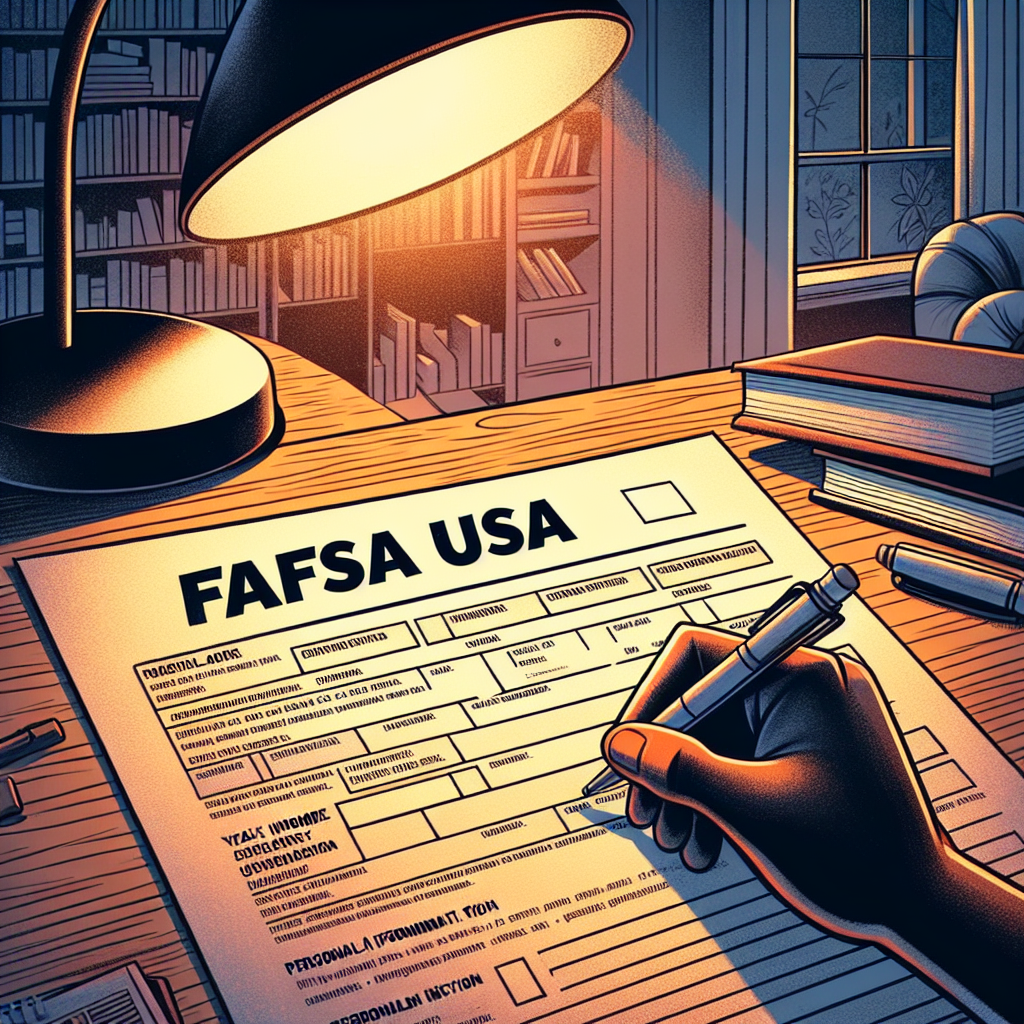
Fafsa usa
# Understanding the FAFSA: A Comprehensive Guide to Financial Aid in the USA ## What is FAFSA?The Free Application for Federal Student Aid, commonly known as FAFSA, is a vital tool for college students in the United States. It allows students to apply for financial aid from the federal government, state agencies, and many colleges and universities. The financial aid obtained can be in the form of grants, scholarships, work-study, and loans to help students cover their educational costs.
## Why is FAFSA Important?The significance of FAFSA cannot be understated. Here are several reasons why submitting your FAFSA application should be a priority:
- Access to Financial Aid: Most federal and state financial aid programs require a submitted FAFSA. Without it, you may miss out on essential funding to support your education.
- Eligibility for Scholarships: Many colleges and private scholarships use FAFSA to determine eligibility and financial need. Filling it out broadens your chances of acquiring funds.
- Tackling Education Costs: With rising college tuition and living expenses, FAFSA provides critical support that can help ease the financial burden on students and their families.
Any student planning to attend a college or university in the USA should consider completing the FAFSA. This applies to:
- High school seniors
- Current college students
- Graduate and professional students
- Students attending vocational and technical schools
Regardless of your financial situation, submitting a FAFSA could open up opportunities for assistance that you didn’t know existed.
## When to Complete the FAFSAFAFSA Deadlines
FAFSA has specific deadlines that vary by state and institution. Generally, it’s recommended to complete the FAFSA as early as possible. Here’s a breakdown of timelines to keep in mind:
- Federal Deadline: Usually around June 30th of the academic year you are applying for.
- State Deadlines: Vary by state; some may be as early as February or March.
- College Deadlines: Some institutions have their own deadlines that may differ from federal and state guidelines.
To ensure you do not miss any vital deadlines, check your state’s requirements and your prospective colleges’ admissions offices.
## Preparing to Apply for FAFSA ### Gather Necessary DocumentsBefore you begin filling out the FAFSA, have the following documents ready:
- Your Social Security number
- Your driver's license number (if applicable)
- Your tax returns and W-2 forms for the previous year
- Records of untaxed income
- Information from your parents (if you are a dependent)
Before completing the FAFSA online, you’ll need to create a Federal Student Aid (FSA) ID, which serves as your electronic signature. Both students and parents can create their own FSA IDs.
## How to Complete the FAFSACompleting the FAFSA can be done online, through a mobile app, or by mail. However, the online process is generally the fastest and most convenient. Here’s how you can do this:
Step-by-Step Process
- Visit the FAFSA website.
- Log in using your FSA ID.
- Select the appropriate academic year for which you are applying.
- Complete all the sections of the application:
- Personal Information
- School Selection
- Dependency Status
- Financial Information
- Review your application for accuracy.
- Submit your application.
Once submitted, you will receive a confirmation and an estimated Expected Family Contribution (EFC), which indicates what the federal government thinks your family can contribute to your education.
## Understanding Your Financial Aid Offer ### The Student Aid Report (SAR)After completing the FAFSA, you will receive a Student Aid Report (SAR), which summarizes the information you provided and your EFC. It is crucial to review this report for any errors as it affects the financial aid you may receive.
### Financial Aid Award LettersOnce your SAR is processed, the colleges you selected on your FAFSA will send you financial aid award letters. These letters outline the types of aid you are eligible for, helping you to make an informed decision on where to attend.
## Common FAFSA Mistakes to AvoidFilling out the FAFSA can be complicated, and mistakes can lead to delays in receiving financial aid. Here are common errors to watch for:
- Not using the correct FSA ID.
- Providing inaccurate financial information.
- Skipping the signature section.
- Missing deadlines.
- Failing to list all schools you are interested in attending.
If you have questions regarding FAFSA, several resources can assist you:
- Federal Student Aid Information Center: You can call 1-800-433-3243 for questions related to FAFSA.
- Your School’s Financial Aid Office: Reach out directly to your institution's financial aid office for guidance.
- Online Resources: Websites like Advocacy organizations and educational forums often provide advice and tips about the process.
Filling out the FAFSA is a crucial step in securing financial aid for college. Understanding the application process, knowing the deadlines, and avoiding common mistakes can make the experience smoother and increase your chances of receiving the funds needed to pursue higher education. Whether you are a first-time student or returning to school, make FAFSA your starting point in exploring funding opportunities. With proper preparation and timely submission, you are on your way to tackling your educational goals financially.
### Important Reminders - **Stay organized:** Keep track of your financial information and deadlines. - **Review annually:** Submit the FAFSA every year to continue receiving financial aid. - **Keep up with changes:** Financial aid policies can evolve; staying informed will grant you an edge in securing support.By following these guidelines and utilizing available resources, you'll be well equipped to navigate the financial aid landscape and invest in your future. Remember, every little bit counts when it comes to financing your education!
By Guest, Published on July 29th, 2024